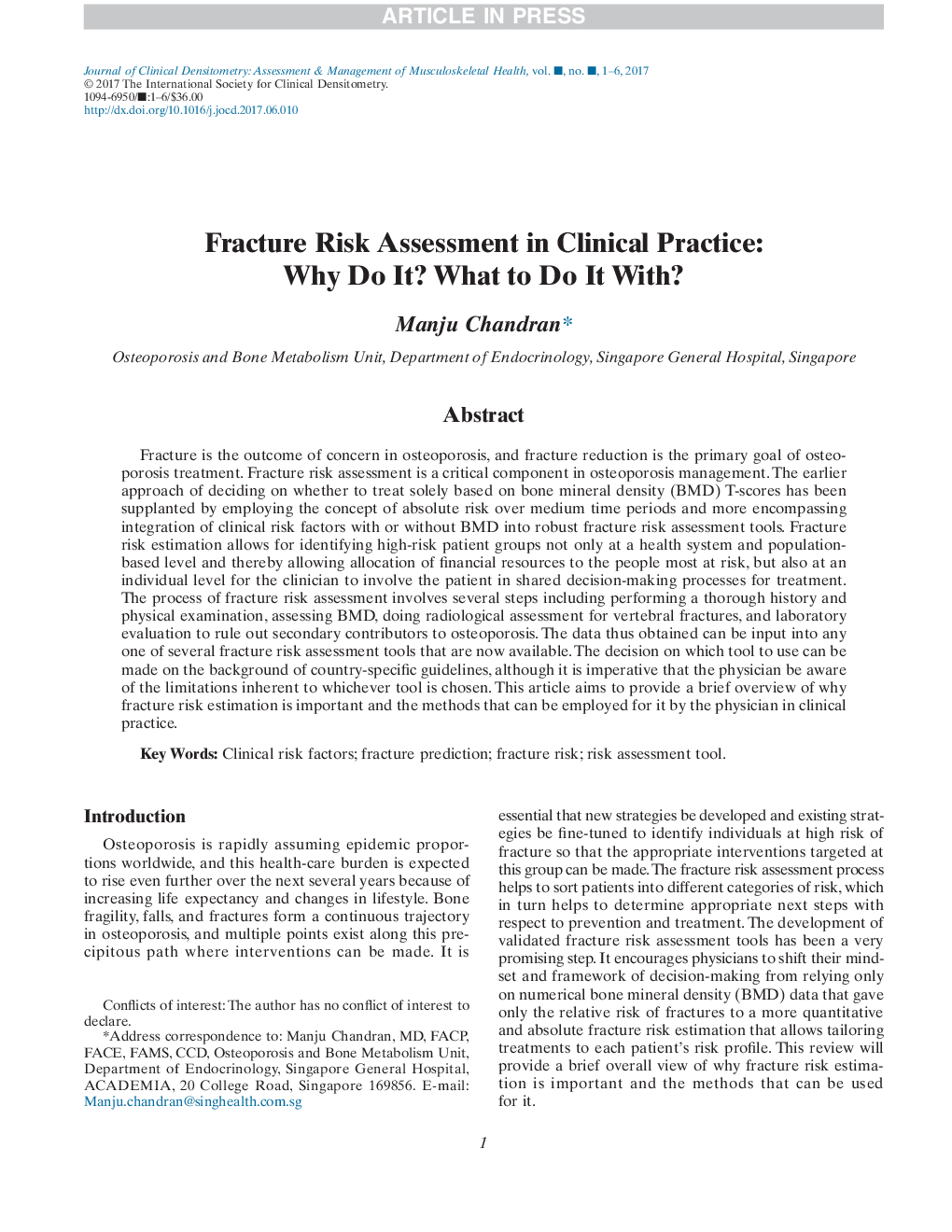| کد مقاله | کد نشریه | سال انتشار | مقاله انگلیسی | نسخه تمام متن |
|---|---|---|---|---|
| 8723053 | 1589615 | 2017 | 6 صفحه PDF | دانلود رایگان |
عنوان انگلیسی مقاله ISI
Fracture Risk Assessment in Clinical Practice: Why Do It? What to Do It With?
ترجمه فارسی عنوان
ارزیابی ریسک شکست در عمل بالینی: چرا این کار را می کند؟ چه کار باید بکنم؟
دانلود مقاله + سفارش ترجمه
دانلود مقاله ISI انگلیسی
رایگان برای ایرانیان
کلمات کلیدی
عوامل خطر بالینی، پیش بینی شکست خطر شکستگی، ابزار ارزیابی خطر،
موضوعات مرتبط
علوم پزشکی و سلامت
پزشکی و دندانپزشکی
غدد درون ریز، دیابت و متابولیسم
چکیده انگلیسی
Fracture is the outcome of concern in osteoporosis, and fracture reduction is the primary goal of osteoporosis treatment. Fracture risk assessment is a critical component in osteoporosis management. The earlier approach of deciding on whether to treat solely based on bone mineral density (BMD) T-scores has been supplanted by employing the concept of absolute risk over medium time periods and more encompassing integration of clinical risk factors with or without BMD into robust fracture risk assessment tools. Fracture risk estimation allows for identifying high-risk patient groups not only at a health system and population-based level and thereby allowing allocation of financial resources to the people most at risk, but also at an individual level for the clinician to involve the patient in shared decision-making processes for treatment. The process of fracture risk assessment involves several steps including performing a thorough history and physical examination, assessing BMD, doing radiological assessment for vertebral fractures, and laboratory evaluation to rule out secondary contributors to osteoporosis. The data thus obtained can be input into any one of several fracture risk assessment tools that are now available. The decision on which tool to use can be made on the background of country-specific guidelines, although it is imperative that the physician be aware of the limitations inherent to whichever tool is chosen. This article aims to provide a brief overview of why fracture risk estimation is important and the methods that can be employed for it by the physician in clinical practice.
ناشر
Database: Elsevier - ScienceDirect (ساینس دایرکت)
Journal: Journal of Clinical Densitometry - Volume 20, Issue 3, JulyâSeptember 2017, Pages 274-279
Journal: Journal of Clinical Densitometry - Volume 20, Issue 3, JulyâSeptember 2017, Pages 274-279
نویسندگان
Manju Chandran,
